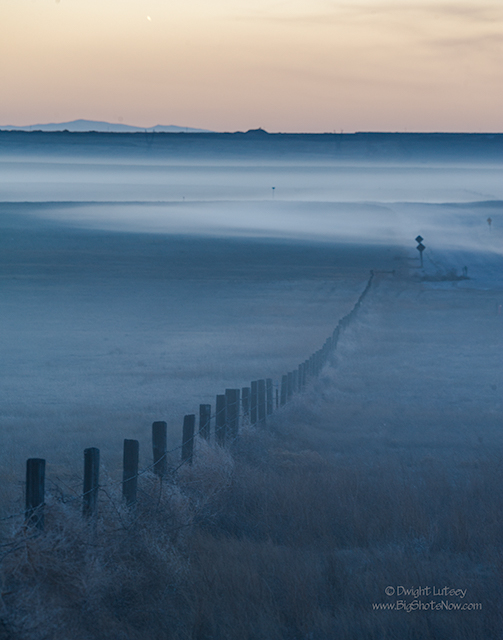On a recent trip to Pawnee National Grasslands looking for early migrating raptors and antelope herds moving north through the short-cropped grass, we were on the lookout for anything moving. The land was empty to the horizon with nothing stirring but tufts of last years golden grass waving in the fitful wind.
Pawnee National grasslands is located 40 miles west of nowhere and 61 miles east of too far. This makes it hard to find unless you really want to get there. We did so we persevered. Not really lost but unsure of where we were we would drive into little towns like Grover, population less than you’d expect and ask “Where are we?”. One reticent local we spoke to answered with gestures more than words, saying we were here pointing downwards, and we should go that way indicated with outstretched arm, and then with a flick of his thumb indicated we should then go that way, which may have been to the right. It was clear as mud but helped us on our way.
There are two large monolithic limestone buttes that rise several hundred feet into the air, sort of like a miniature Ayers Rock, or Uluru as the natives musically call it but doubled, that tell you have reached the virtual center of the Pawnee National grasslands. The full view of these is best obtained by climbing up a steep rutted dirt road that you thought when you turned onto it from another steep rutted dirt road, might take you to the Buttes as they’re called. And the joy and relief you feel that you were right adds to the enjoyment of seeing them, standing there in all their glory, just where the rumors had it they’d be.
Since we were high up on a neighboring ridge with the buttes and half the world at our feet we felt like it was a good place to stop and consider. Much time was spent watching the buttes, waiting to see it they’d move, they didn’t, but the wind through the grass did. The occasional bird flying overhead did, the sun did, but not us. We stayed as still as the buttes and had lunch. Beauty doesn’t negate hungry. All your senses must be fed.
It wasn’t long before the sun had made its relentless journey to the West and threatened to dive behind the blue wall of mountains ending another day. The sky turned an even deeper shade of blue and the realization that we were on a ridge in the middle of nowhere and had many miles to go before we saw civilization again made the decision to leave for us. We began the bumpy jolting journey down towards blacktop and waiting modern life.
The lights jumped crazily over the two ruts that were the road and darkness raced towards us at the speed of light. The hundreds and thousands of miles it felt like we had traveled, although the speedometer said much less, seemed even longer in the encroaching darkness and it was a small relief to suddenly top out and find smooth blacktop under our wheels again. We were on a low ridge forming one side of a wide flat valley that the magic began to happen.
Fog, or mist, no it was fog, much much thicker than mist, substantial and definite as it began to form what looked like, from a distance, impenetrable clouds of pale blue light rising out of the valley floor. At first it was just wispy and directionless. Then as if deciding it was its time to become alive it rapidly formed into opaque fingers that quickly stretched across the valley seemingly barring all access to the outside world. Strangely beautiful it wasn’t long before the entire valley was engulfed in it’s eerie luminescence. It seemed slightly intimidating in its ghostly beauty but if we wanted to get home and at that moment home seemed like a welcome place to be, we entered the valley and trusted to the fates that our journey would be a safe one. Entering the blue side of nowhere had its risks but what doesn’t these days.
The odyssey to Pawnee Buttes National grasslands was a unique experience. Meeting strangers who became helpful, finding lost roads and quirky little side trips, locating the buttes and watching them turn from pure white sandstone to the golden colors of end of day on its smooth-sided walls made every moment one that will be permanently etched into our memory. But what made this a truly meaningful and unforgettable experience was the pale blue fog of the high plains grasslands. What we now call the Blue Side of Nowhere.



You must be logged in to post a comment.